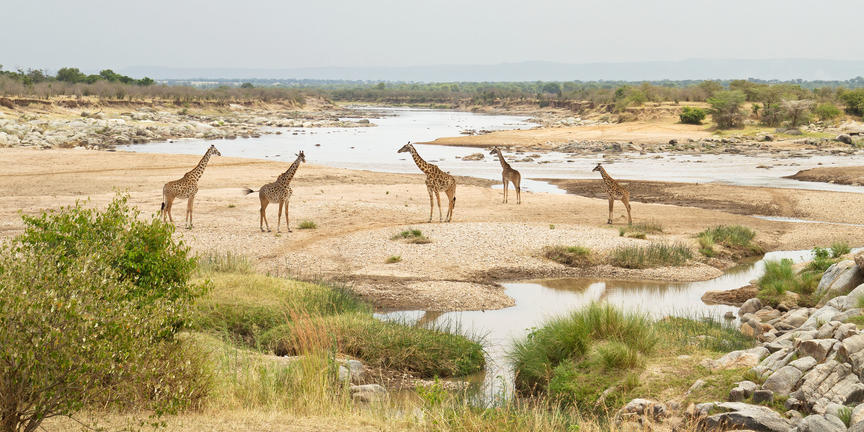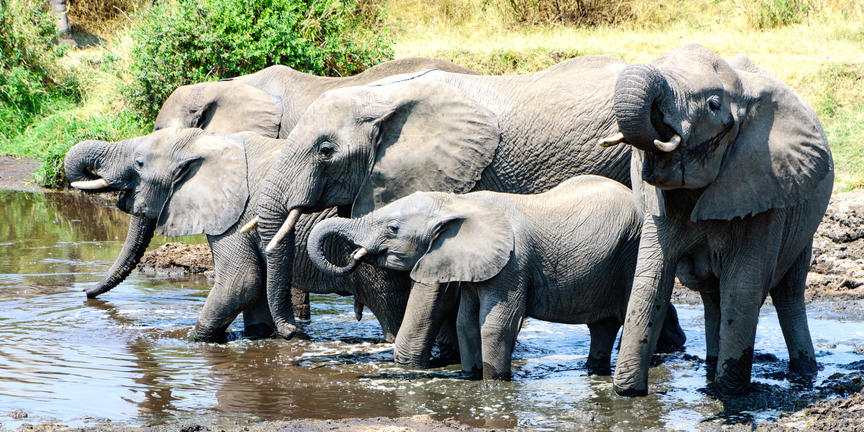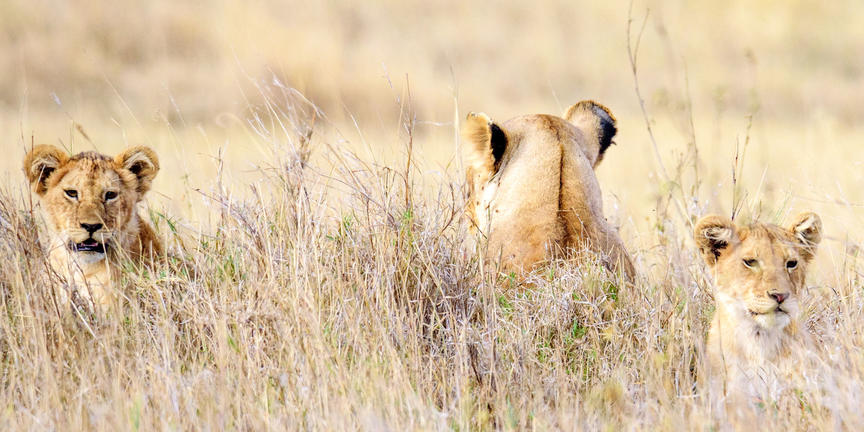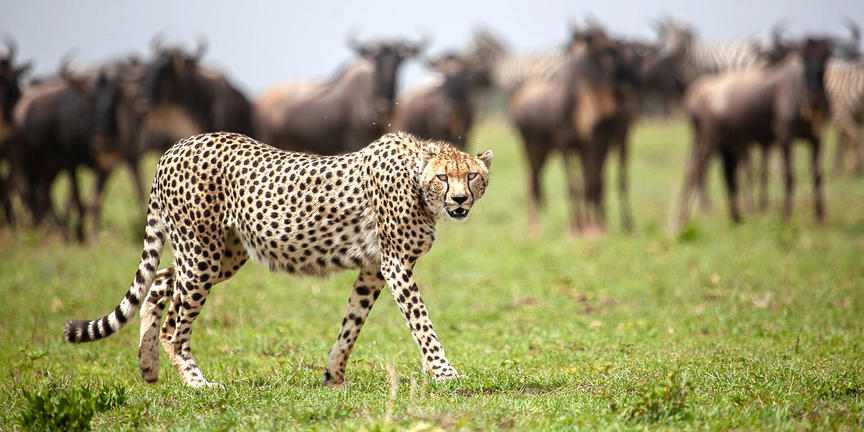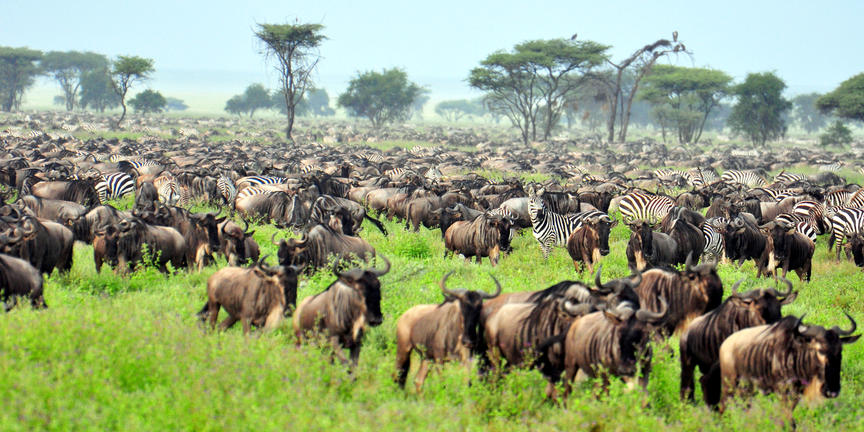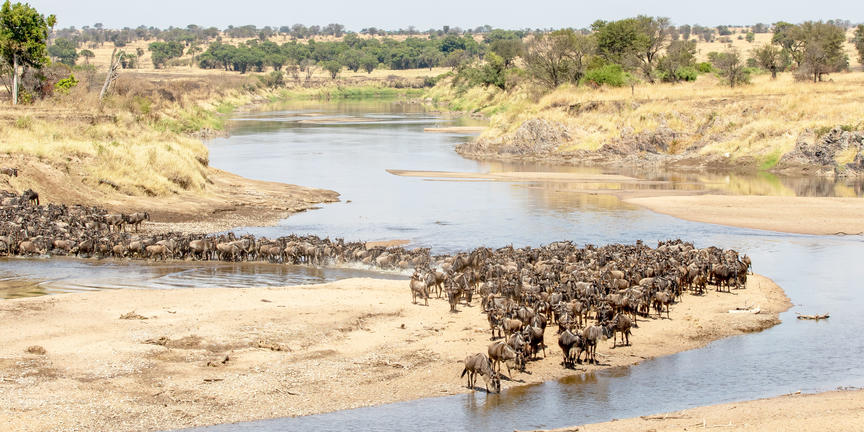The Serengeti, established in 1951, and covering an area of almost 15,000 square kilometres, is one of the most spectacular game parks in East Africa. From its short and long grass plains in the south, which give way to Acacia savannah in the central area, to the hilly more densely wooded areas of the north, and the extensive woodland in the western corridor, Serengeti offers great variations both geographically as well as with the millions of animals, birds and plants that make up this complex ecosystem.
Twice a year, triggered by the rains, 1.3 million wildebeest, 200,000 zebra and 300,000 Thomson’s gazelle gather to undertake the long trek to new grazing lands. The migration of the herbivores roughly defines the boundaries of Serengeti National Park which is the central zone of the Serengeti ecosystem, an area that also takes in Kenya’s Masai Mara National Reserve, the Ngorongoro Conservation Area and the Maswa Game Reserve in the west. Within these 25,900 square kilometres of varied landscape live thirty-five species of plains game and 500 bird species.
